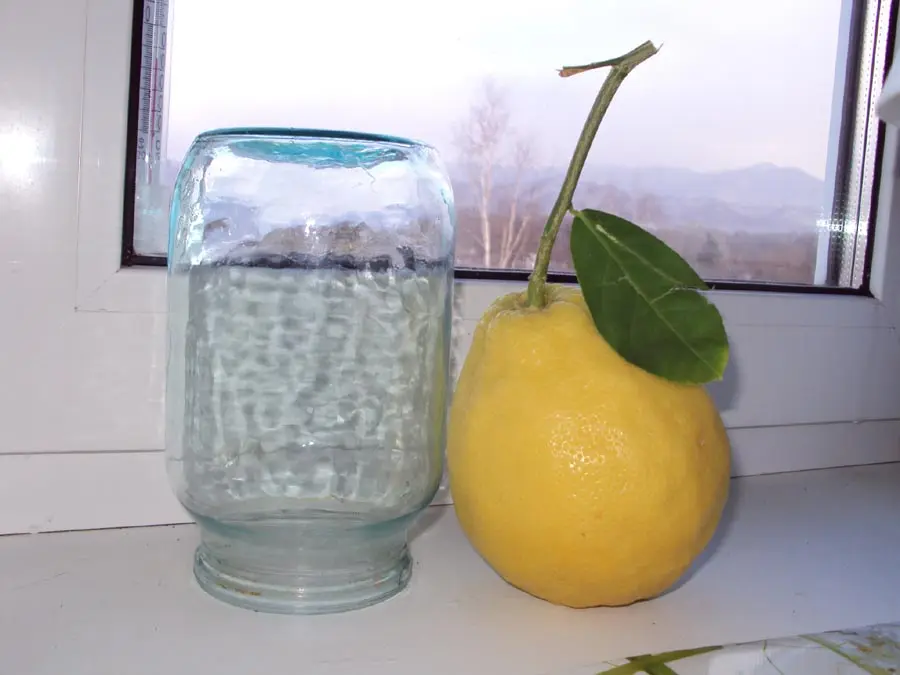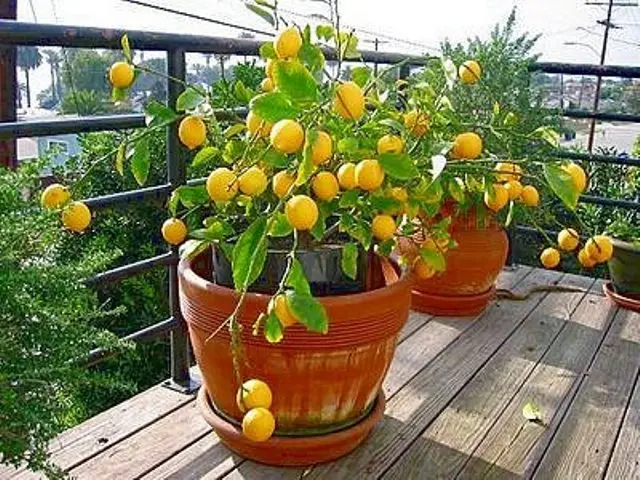Contents


Today you will not surprise anyone with a homemade lemon in a pot. There is simply a huge range of varieties of these plants. Some are more common, others are rare. Recently, Panderose lemon has become increasingly popular. In this article we will consider all the features of the variety and care for it.
Variety information
The Panderose Lemon is a hybrid plant that results from crossing grapefruit, citron or pompelmus and lemon. Due to this, this variety of lemon is often confused with the Kyiv large-fruited lemon tree. Panderose is considered the ancestor of the following varieties: Skiernevitsky, Yubileiny and, of course, Kyiv large-fruited. By external signs, these home varieties are very similar, and it is rather problematic to distinguish between them. This can only be done by their fruits.
Appearance
The Panderose variety has the appearance of a small compact bush or tree, which at home is similar to an ornamental plant. The maximum growth of the tree does not exceed one and a half meters. Refers to dwarf plants. The shape of the crown of such a lemon can be different, but most often it is formed in a decorative style. The crown is characterized by a small volume, especially if you make frequent pruning.
Panderose lemon is resistant to high temperatures, as well as dry air. Its fruiting occurs in the second year.
The development of strong branches is characteristic. The leaves of such a lemon are dark green in color and large in size (15×8 cm). To the touch, the leaf blade is smooth, round or oblong in shape and rigid. The petiole of the leaves is short with distinct and small wings. Leaves fall approximately once every three years.
By its nature, this is a medium-sized tree with a rather thick shoot. The bark on the trunk is grayish. There are small cracks (especially on perennial branches). Young shoots are characterized by a greenish and smooth bark. On young lemon trees, spines are absent or occur in small quantities. At the same time, in perennial lemons, spines are always present on the trunk.
The appearance of the Panderose lemon can be found in this photo.

Flowering
This variety of lemon tree blooms very profusely. Flowers can form even on the stem, thus interfering with the formation of leaves and twigs. Especially often this process can be observed on cuttings (grafted or rooted). With the development of such a situation, the flowers must be cut off before blooming. This should be done until a normal young shoot appears. Such an escape will very quickly turn into a branch, at the ends of which there will be rounded leaves. On an adult plant, flowers form at the ends of the shoots.
Panderose flowers are white-cream in color and are often collected in an inflorescence. They are very large in size, and the petals are long. During flowering, the entire bush becomes similar to a bouquet. Despite the fact that this lemon blooms profusely, few fruits form on it.
The Panderose variety reproduces well with the help of cuttings. Sometimes flowering of a recently rooted cutting is possible. In such a situation, it is better to cut off the flowers, since they significantly reduce the growth activity of the plant. This phenomenon has received the unofficial name “Panderose Syndrome”. This variety is characterized by low growth.
Fruit
The fruits are formed quite large in size, which is a feature of this variety. With proper care, you can get a lemon weighing up to a kilogram. Their shape is round or pear-shaped. The flesh of the fruit is pleasant to the touch and sour in taste. It has a lot of seeds. No typical citrus flavor. This is due to the fact that citric acid is contained in minimal concentrations. But the content of vitamin C is almost the same as other varieties. The peel of the fruit is thick (up to 1 cm) and bumpy, the taste is bitter.

On an adult 12-year-old Panderose lemon tree, up to several dozen fruits can form.
The big plus of this variety is that Panderose is absolutely unpretentious to growing conditions.
Video “Panderose Lemon Tree”
The video gives a description of the Panderose lemon variety, as well as recommendations for growing in a home greenhouse.
Features of care
Since this variety is a hybrid, its care is somewhat different from that which is usually characteristic of the classic lemon tree.
Transfer
The homemade variety of Panderose lemon, like all other lemons, needs to be transplanted. The features of this process are that it is carried out by the transshipment method.
Features of transplantation by transshipment method:
- the tree is transplanted into a pot, which is 2-4 cm larger than the previous one;
- It is best to choose a pot made of clay. Such a pot will most well drain and provide air to the roots. Although if such a choice is impossible, you can get by with a plastic or ceramic pot;
- it is best to use special soil mixtures that will be as nutritious as possible for the tree. Such mixtures can be purchased at any flower shop;
- if you decide to make such a mixture yourself, then it must necessarily include leaf and sod land, humus, sand. All these components must be mixed in equal proportions;
- when transplanting, do not deepen the plant into a pot;
- above ground level, a small distance (a couple of centimeters) should be left for watering.
Watering and air humidity requirements
This variety does not need abundant watering. You need to water evenly, but the earthen ball should not be damp. Throughout the growing season, the surface layer of the earth should be slightly dried. Only in this case the tree needs watering.
In hot climates and during the heat of summer, lemon should be watered twice a day. But at rest, the tree needs to be watered only once a week.
It is also necessary to maintain a constant humidity. This is especially important in winter. To do this, a pot with a lemon tree must be placed in a tray that is slightly larger than the pot itself, and covered with small pebbles or expanded clay. Then you should fill it with water. In this way, you will get an almost constant level of humidity.
Additional fertilizing
Feeding lemon Panderose also has its own characteristics. During the growing season, it is fed with liquid fertilizers that are suitable for citrus fruits. Top dressing is carried out once a week. In autumn and winter, top dressing is carried out once a month. In other cases, fertilize according to the instructions given on the preparations and depending on the need.
Trimming
Crown pruning is carried out in early spring and before the start of the growth process. This process should only be carried out with clean tools. The crown needs to be thinned out so that sunlight penetrates inside it and air circulates better. Young shoots are pinched if they begin to grow lower than the lowest branches. Such manipulation can be carried out at any time of the year at the time of their appearance.
Temperature conditions in the apartment and when taken outside
This variety of lemon can be taken out into the street, but only if the air temperature at night does not fall below + 15 ° C. This must be done gradually. During the day, the lemon should be placed in a shady or dark place, and at night it should be brought back into the house. This procedure must be repeated for two weeks. After the acclimatization process has been completed, the tree can be left outside overnight in such a way that direct sunlight falls on it in the morning. In the afternoon, the pot should be in the shade. Panderose can be on the street until autumn. When the night temperature drops below + 15 ° C, it is brought into the house until next spring. The optimal temperature for bringing into the house is when the temperature in the house and on the street are the same.

In the house, the lemon is placed in a well-lit room with an air temperature of + 20 ° C.
In winter, additional lighting is useful for the plant. Additional illumination can be carried out using a special phytolamp. But the Panderose variety can easily do without additional lighting.
As you can see, knowing the features of the Panderose variety and caring for it, you can get an excellent indoor lemon tree that will please the eye. A fresh lemon will always be on the table.









